|
Other Kalamazoo Companies
in World War Two: Fuller
Manufacturing Company Gibson
Guitar
Ingersoll Steel and Disk Shakespeare
Company
Checker
Car Company in World War Two
Kalamazoo, MI
1922-2009
Rest in Peace
This page last updated
10-29-2021.
Checker was known for its taxi
cabs. I remember growing up seeing them on the streets in Lansing,
MI. I always thought they looked a lot like a mid-50's
Chevrolet. The company stopped making taxicabs in 1981
but was still a supplier to the auto industry until 2009 when it went
bankrupt.
Checker Car Company World War Two Products:
Truck cabs for Ford Motor Company, 46,759 of various types of trailers, and Army Signal
Corps bodies. Checker had about 800 employees on the payroll during
World War Two.
As shown in the table below, Checker built
46,749 trailers of various types under direction of the Detroit Ordnance
Department of the U.S. Army. Trailers ordered by the
U.S. Army Signal Corps are not shown. However, a photo of one is shown below.
Checker Car Company World War Two Trailers Accepted by Detroit Ordnance, US Army
The information below comes from "Summary Report of
Acceptances, Tank-Automotive Material, 1940-1945."
Published by Army Services Forces, Office, Chief of
Ordnance-Detroit, Production Division, Requirements and
Progress Branch
January 21, 1946. |
|
Type |
Checker Model |
1940 |
1941 |
1942 |
1943 |
1944 |
1945 |
Total |
| Semi Trailer,
3-ton two wheel Van |
CC-3 |
|
|
191 |
|
|
|
191 |
| Semi
Trailer, 3 1/2-ton two Wheel 16 foot Stake and Platform |
CC-4 |
|
|
242 |
|
|
|
242 |
| Semi Trailer,
6-ton Two Wheel Van |
|
|
|
|
|
|
610 |
610 |
| Trailer, 1/4-ton
Two Wheel Cargo |
|
|
|
|
|
|
774 |
774 |
| Trailer, 1-ton
Two wheel Cargo |
CC5, CC5A |
|
|
5,500 |
28,791 |
3,672 |
|
37,963 |
| Trailer, 1-ton
Two wheel 250 gallon Water Tanker |
CC1A, CC1B |
|
|
1,491 |
4,000 |
1172 |
|
6,664 |
| 45 ton 12 Wheel
trailer M9 |
D45LF1 |
|
|
|
|
|
334 |
334 |
|
Total |
|
|
|
7,406 |
32,791 |
4,844 |
1,718 |
46,759 |
Author's Note
and Disclaimer: The Detroit Office
of Ordnance of the U.S. Army was the primary purchasing entity for vehicles for the U.S. Army during WWII. It also purchased
vehicles for the USMC, US Navy, and for Lend-Lease. However,
there were other organizations that also purchased vehicles
including the Army Corps of Engineers, U.S. Army Air Force, U.S.
Army Signal Corps, Navy Bureau of Ordnance, Navy
Bureau of Aeronautics, and foreign countries making direct
purchases. In this case it is known that the Signal Corps
ordered its own trailers from Checker, and they are not comprehended in
the numbers above.
Checker made three prototype Jeeps for
the original competition. It was a four-wheel steering design.
When tested, the military considered it to be unsafe. The body design was then sold to Willys-Overland, which mated it
with its four-wheel drive truck chassis to become the basis for the famous Willys
World War Two Jeep. This is still made for the civilian
market today. One of the remaining Checker Car Company Jeeps still
exists.
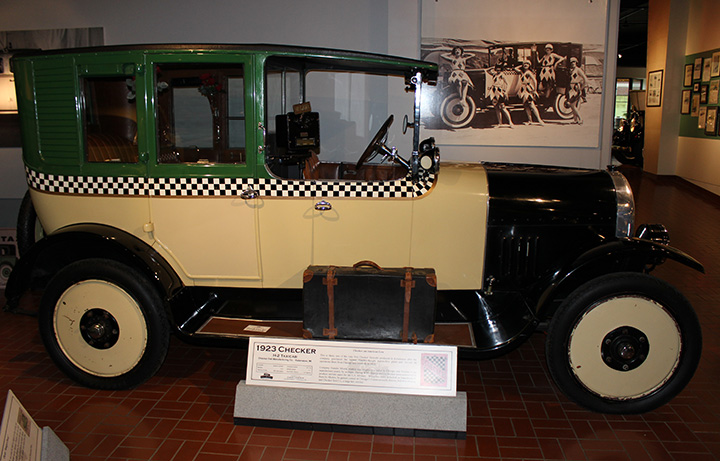
This is a 1923 Checker H-2 taxicab, probably the oldest one still in existence. This can be seen at
the Gilmore Car Museum in Hickory Corners, MI. Author's photo.
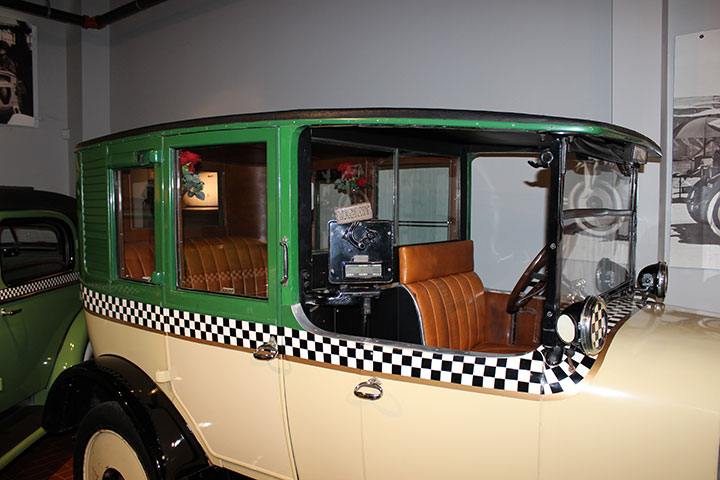
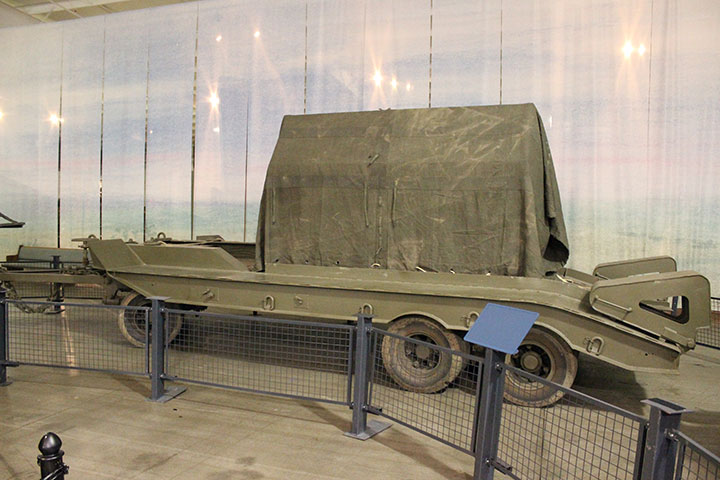
The M9 45-ton trailer pictured here
was designed to
transport tanks over the road to the combat zone while being pulled by
a Diamond T M20 truck. Checker produced 344 of the 6,143 produced by
five different manufacturers. This particular example, was built by
one of the other companies. Author's photo added 10-22-2014.
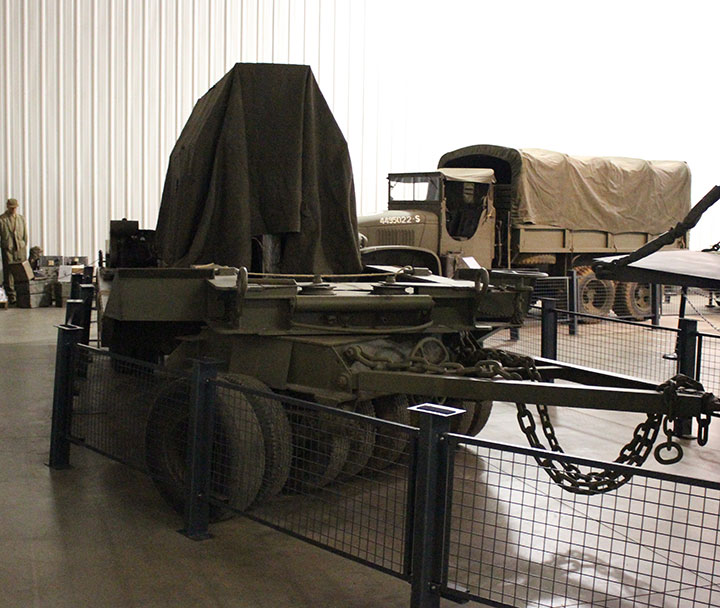
Author's photo added 10-22-2014.
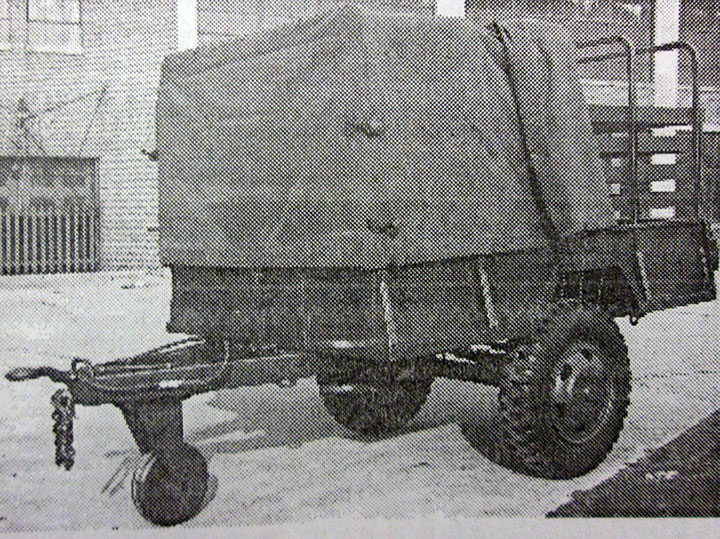
This is only one of two photos found to date depicting a Checker World War Two product. This
is a CC-5 one-ton trailer.
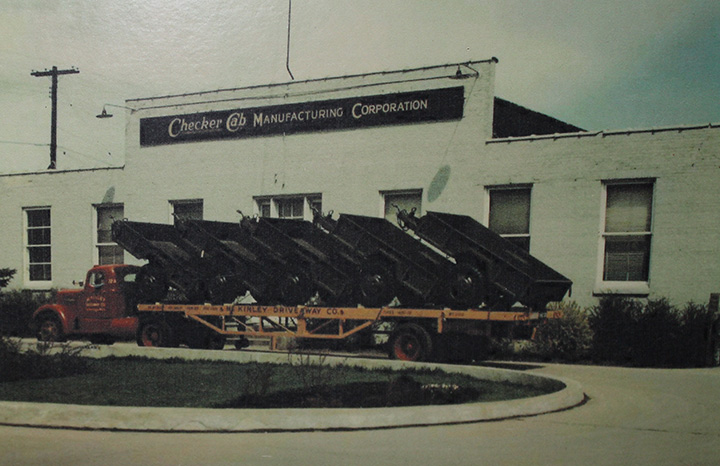
This may be a post WWII photo of one-ton
trailers being shipped out. Checker also apparently made these
during the Korean conflict. Author's photo from the Gilmore
Car Museum.
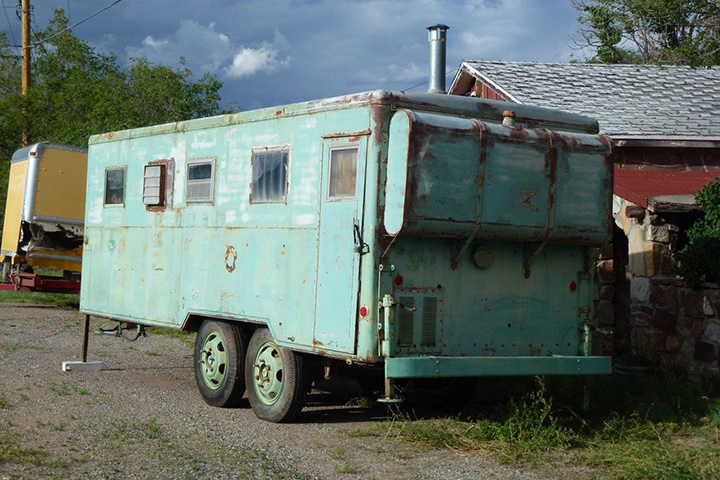
This former World War TwoUS Army Signal Corps K-35
trailer was delivered to the U.S. Army on 9-23-1942. As of July 2014,
it is now the property of Mark Speir in New Mexico. Mark was able
to purchase the trailer before it was scrapped out. Previously, it
had been used by the Forest Service as a command trailer. The
kerosene tank and the chimney for the furnace inside were not part of the
original Signal Corps trailer. Photo courtesy of Mark Speir and
added 7-28-2014.
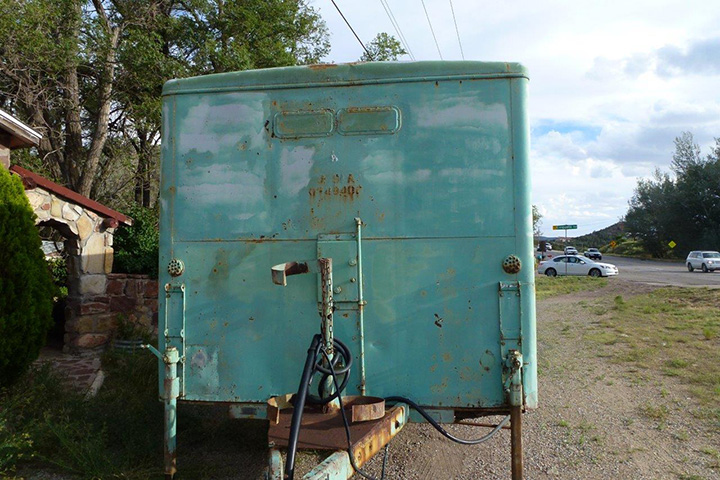
Photo courtesy of Mark Speir and added
7-28-2014.
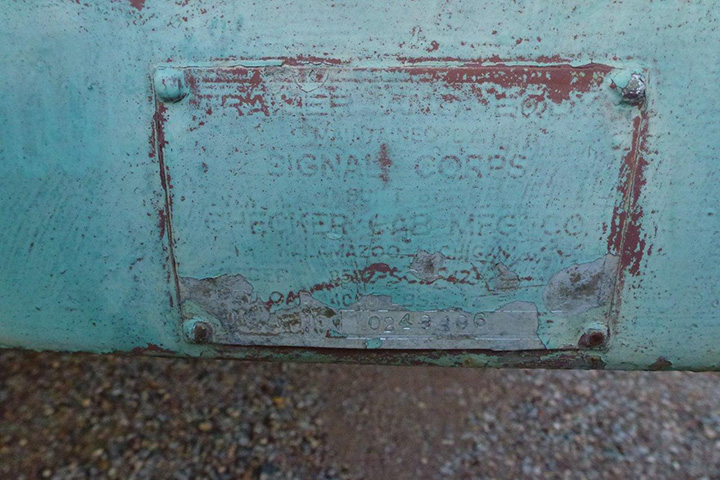
Photo courtesy of Mark Speir and added
7-28-2014.
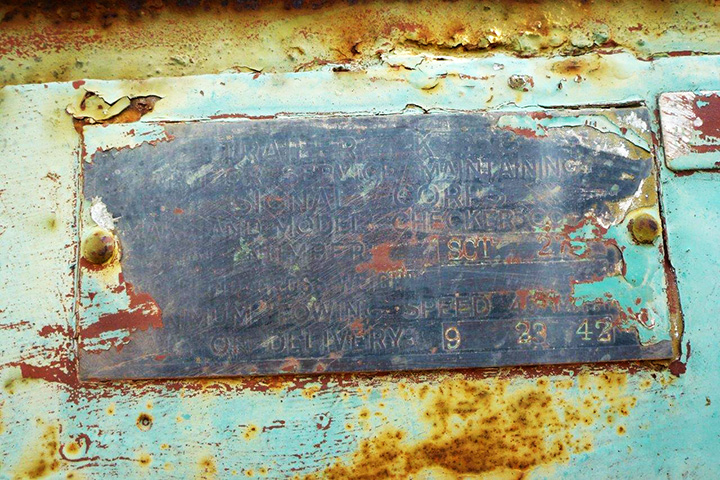
According to the above data plate, the
maximum towing speed for the trailer was 45 mph. Photo
courtesy of Mark Speir and added 7-28-2014.
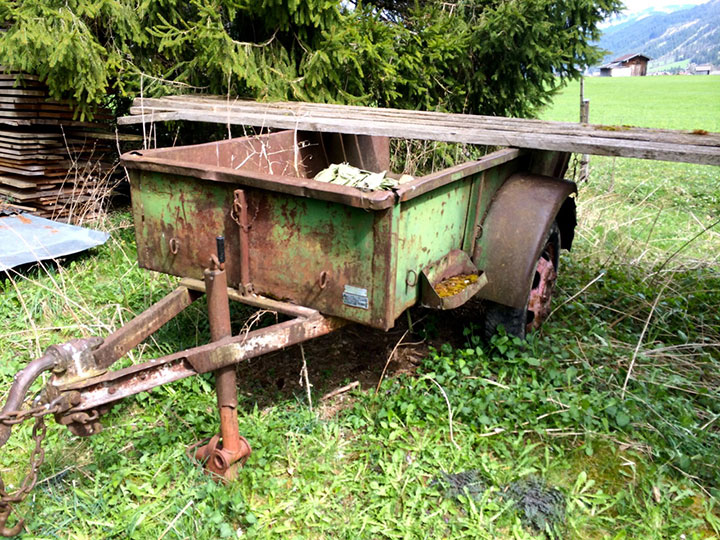
The next three photos, provided by Ian Maddock, show a well-used
and now dilapidated Checker one-ton CC-5A trailer. The date on the
tag indicates it was built during World War Two on
12-2-1943. Photo courtesy of Ian Maddock.
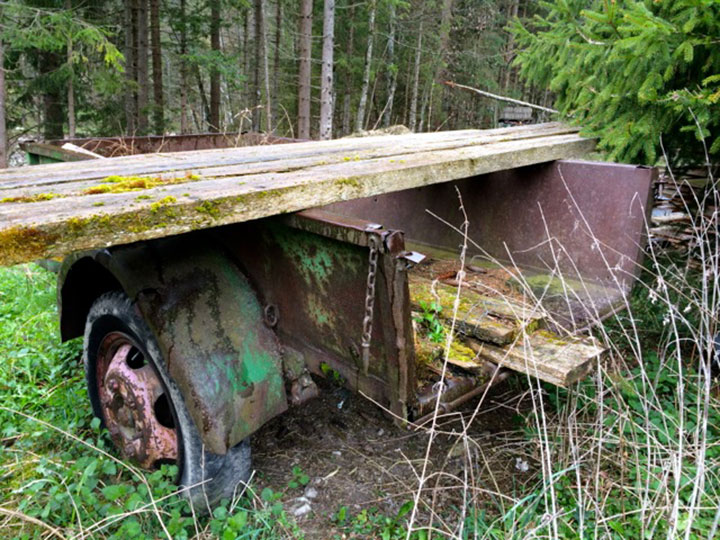
The trailer is located in the village of
Achenkirch in the Austrian Tyrol, where it apparently was used to deliver
cut lumber from the local sawmill. Photo courtesy of
Ian Maddock.
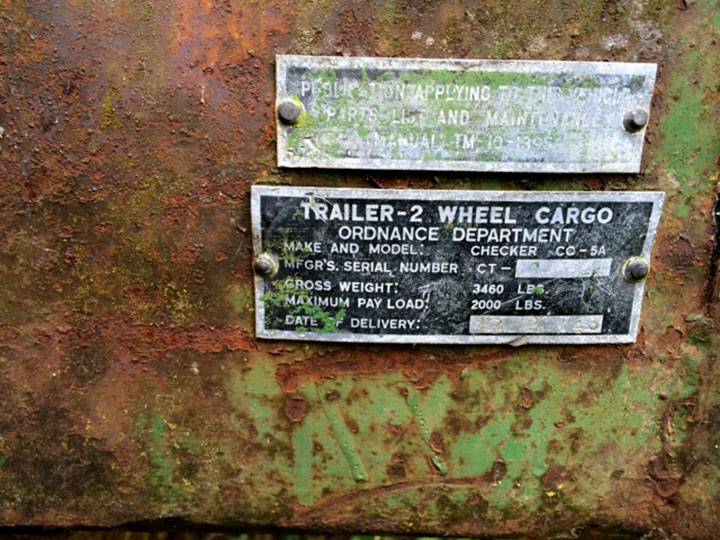
Photo courtesy of Ian Maddock.
Below are World War Two era technical drawings and
information on the various trailers that Checker built.
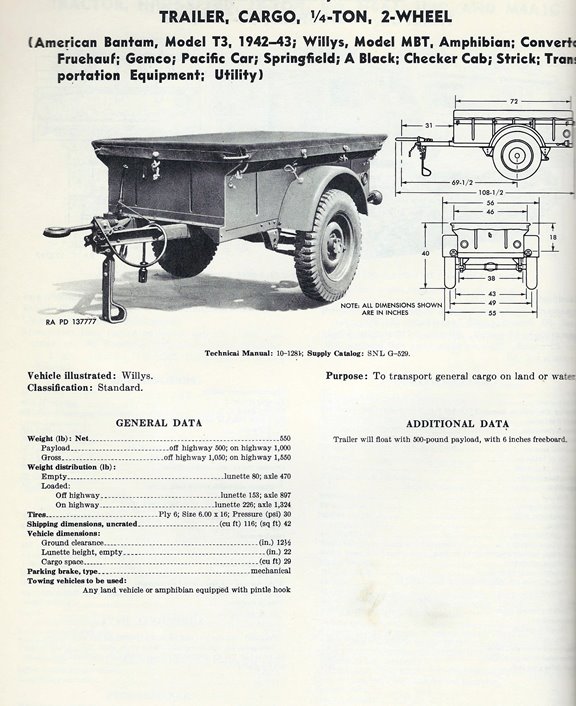
Checker had no designation for the
1/4-ton, 2-wheel trailer. It was normally pulled by a jeep. Photo added 4-30-2017.
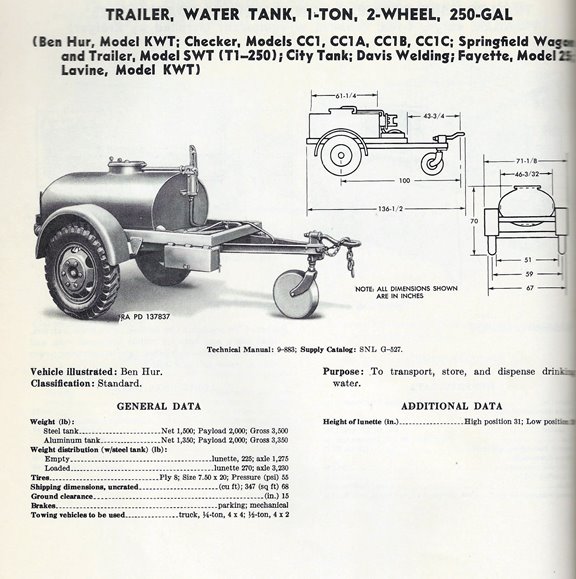
Checker built this 250-gallon tanker trailer in various models; CC1,
CC1A, CC1B, and CC1C. Photo added 4-30-2017.
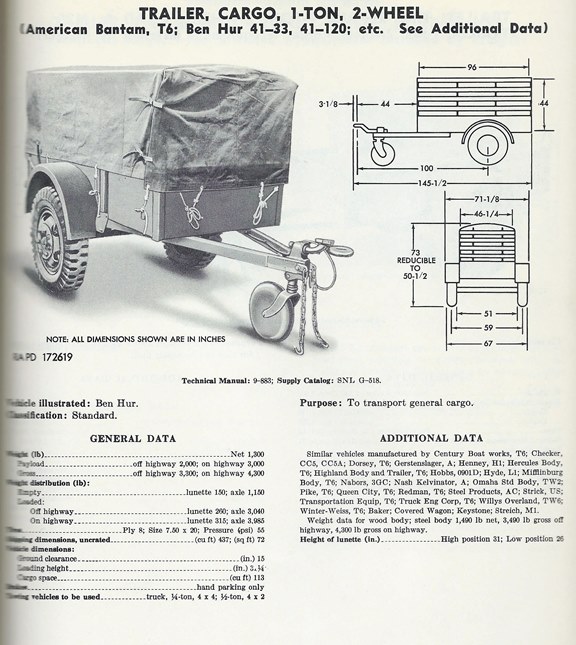
Checker's designation for the one-ton,
two-wheel trailer was CC5. Photo added 4-30-2017.
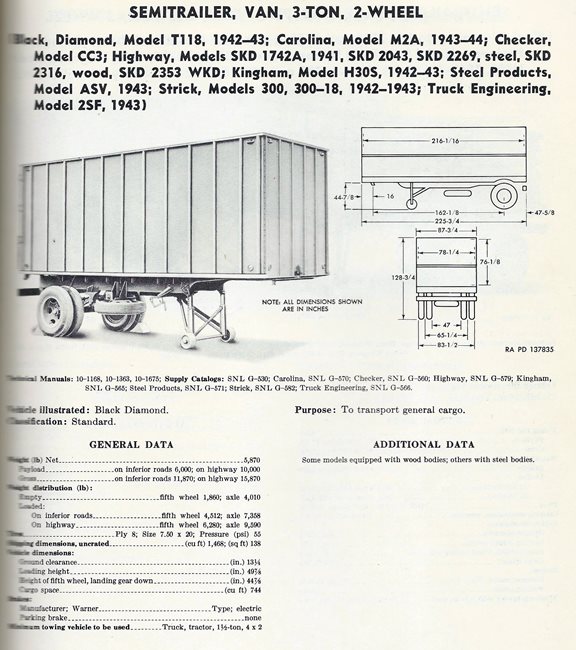
Checker designated the three-ton, two-wheel
semitrailer as a Model CC3. Photo added 4-30-2017.
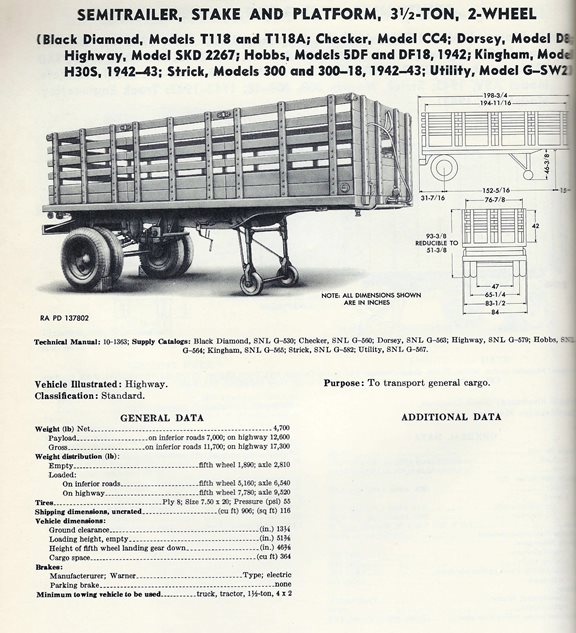
Checker designated its version of the 3.5-ton two-wheel stake and
platform trailer as a CC4. Photo added 4-30-2017.
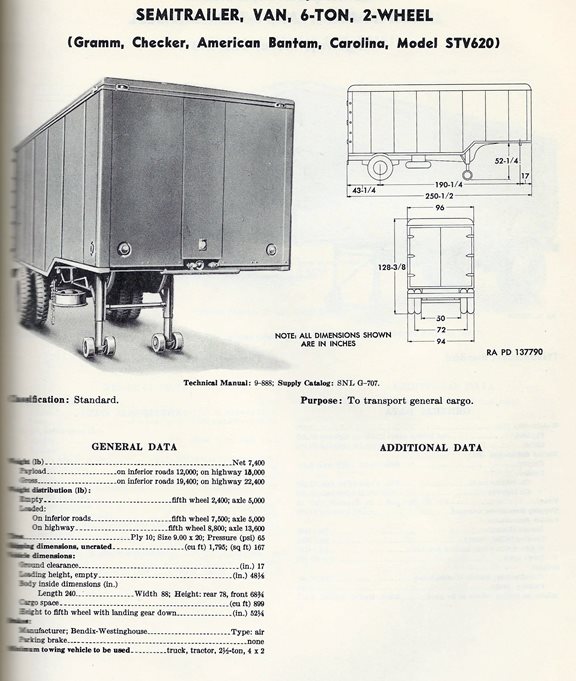
Photo added 4-30-2017.
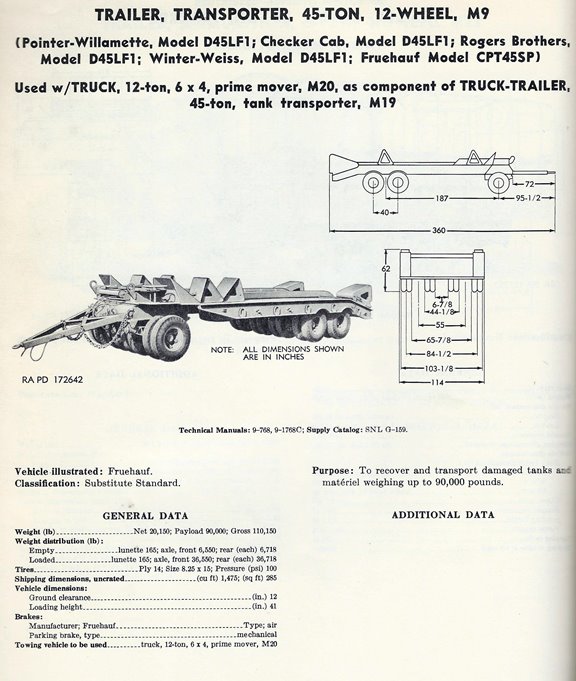
Checker built 344 M9 45-ton, 2-wheel
trailers, and internally designated them D45LF1. Photo added
4-30-2017.
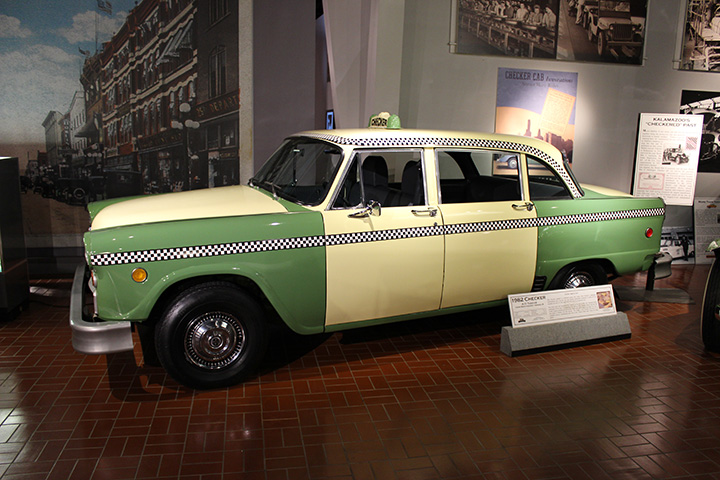
The end of the line! This is the last
Checker taxicab built and was produced on July 12, 1982.
Author's photo from the Gilmore Car
Museum.
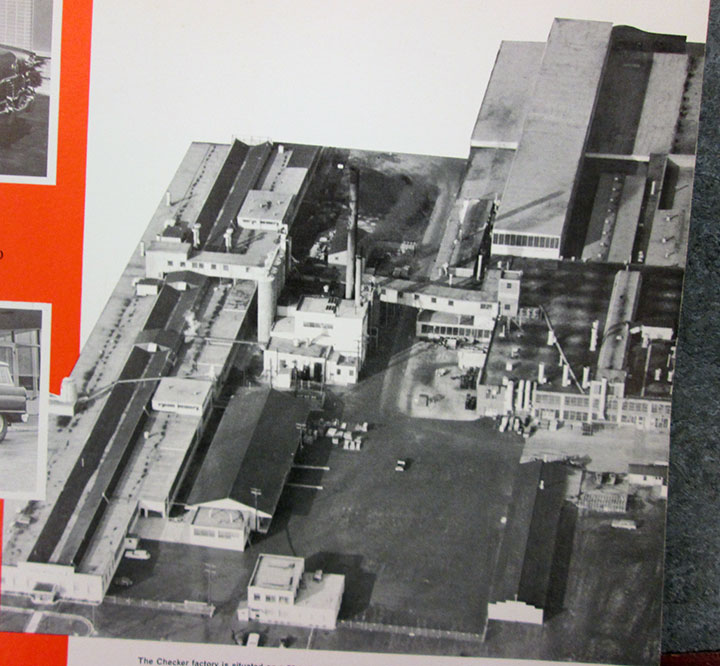
Here is a post World War Two aerial photo of part of the
Checker manufacturing complex on North Pitcher Street in Kalamazoo, MI. While most of the complex has been razed, a couple of the
buildings were still standing when I visited on December 1, 2013.
The stand-alone building at the bottom of the photo was still there as
of that date, along with the one just to the northwest, and a small part
of the building in the upper right. This photo is looking north.
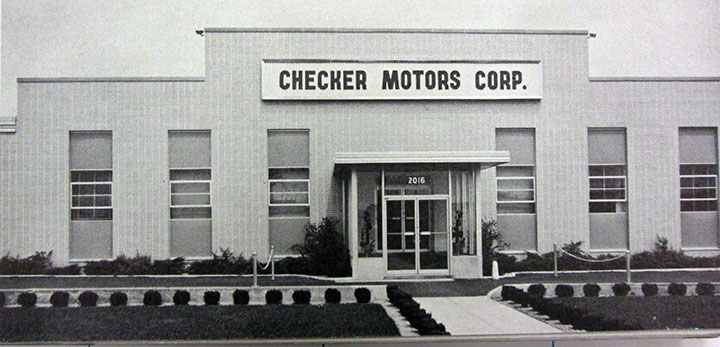
The photo above shows the south end of the
long manufacturing plant that ran north just east of Pitcher Street.
It is no longer there. It is the same building in front of which
the Korean War trailers were parked, as shown above.
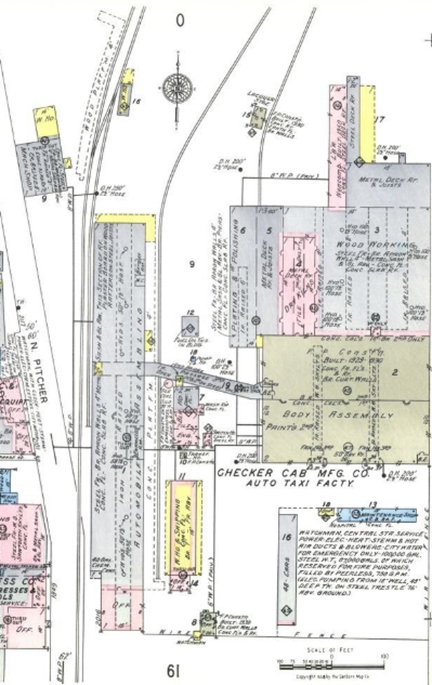
This Sanborn map shows the Checker Company
plant in 1958. Image added 10-29-2021.
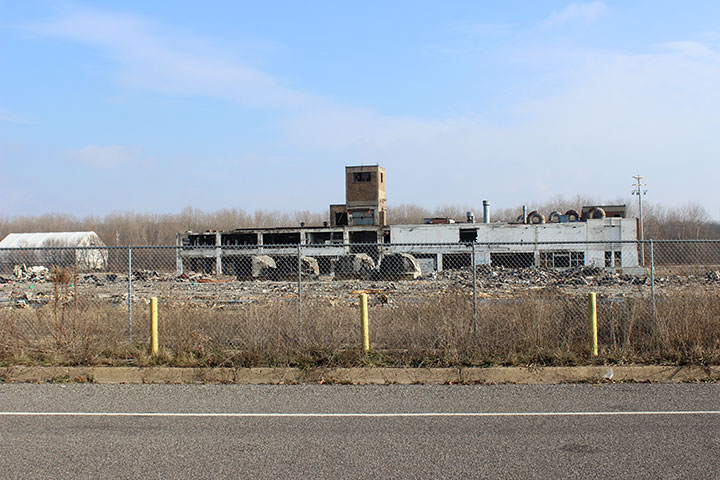
The next four photos were taken during the author's
trip to Kalamazoo, MI on December 1, 2013. All photos are looking
east from North Pitcher Street. This was the biggest building still
standing at the time, and can be identified from the aerial shot above by
the brown brick tower that rises above the rest.
On a return trip of October 23, 2021, all of
the remaining Checker factory had been razed. The area is being
re-purposed for new industry in the area.
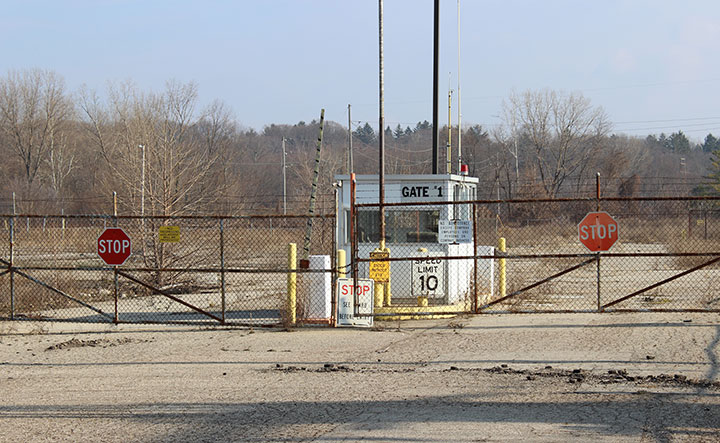
Gate 1 is at the south
end of the aerial photo above, although it is not
shown itself in the photo. From looking at current satellite
images, it appears there may have been more buildings to the south of
this gate as part of the complex but were also razed.
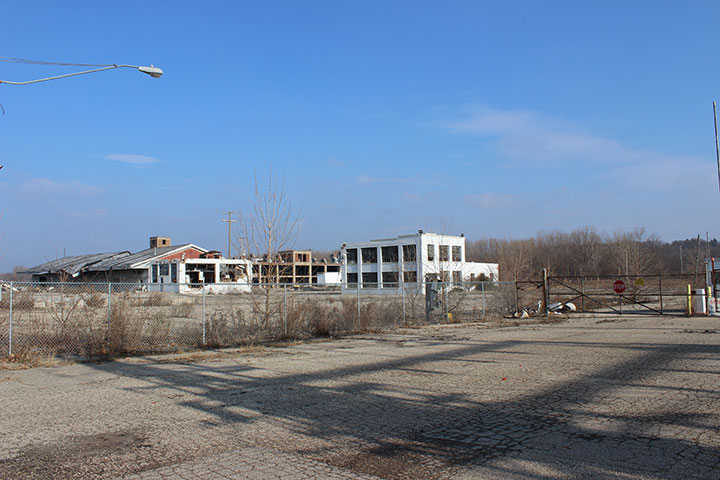
There is the stand-alone building pictured
at the bottom and the one to the NW of it from the aerial photo.
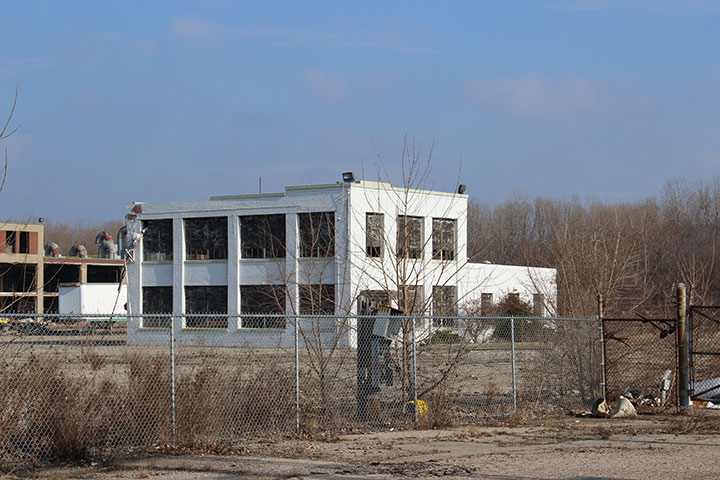
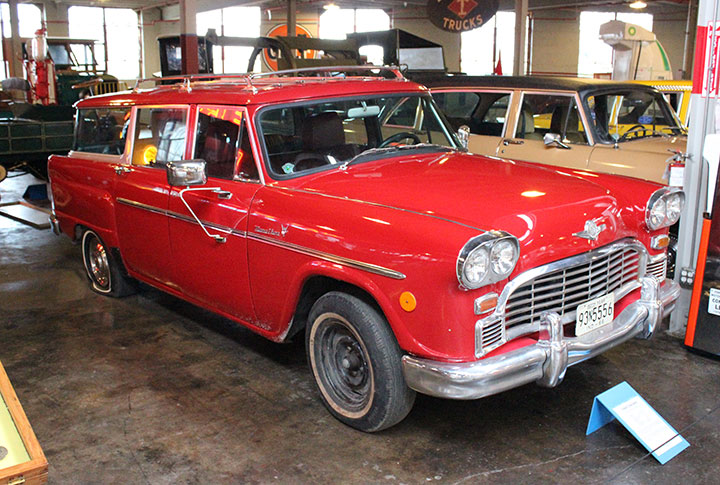
Starting in 1958, Checker started producing
cars for the civilian market. This is a rare 1966 Marathon station
wagon with a GM 350 V-8 engine and GM 400 transmission. As seen at
the National Automotive and Truck Museum in Auburn, IN. Author's
photo.
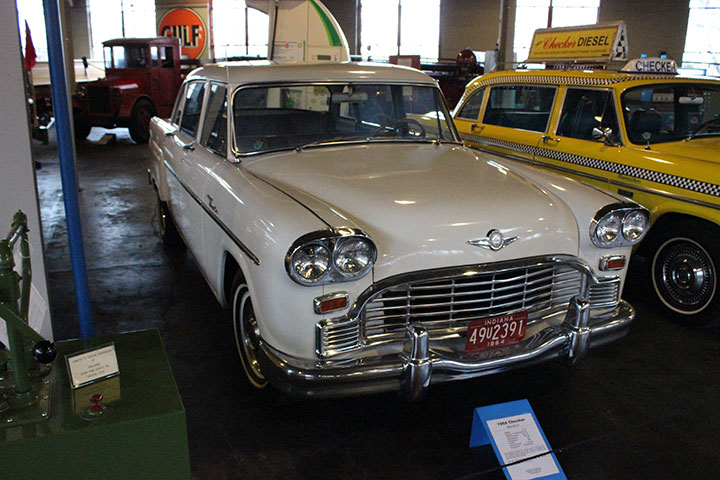
Natmus has an excellent collection of
Checker cars and cabs, including this 1964 Marathon. Next to it is
a diesel powered Checker cab. Author's photo.
|





























